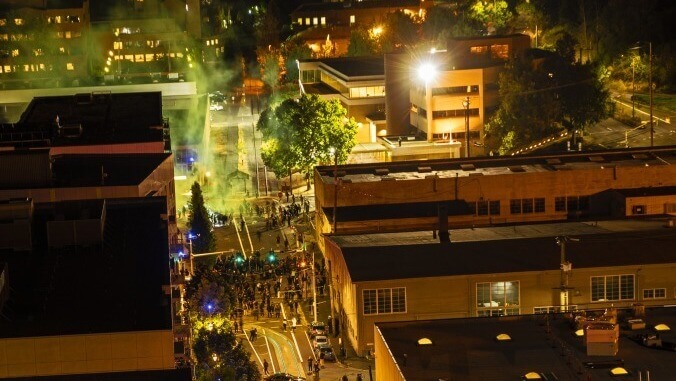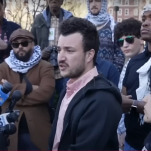ICE Is Using So Much Tear Gas in Portland, a School Abandoned Its Campus
“Daily, we were finding that [sic] munitions on our play yard, we were getting footage in the evening of green gases, and gases were being used near our gardens," said the school's interim executive director.

Portland is a city that knows how to protest—and not by coincidence. With shorter street blocks and pedestrian-friendly crosswalks, Stumptown is designed to make demonstrations easier. “That is something about the shape of the city and how it has developed that makes this possible,” explained urban-planning consultant Jarrett Walker in 2020, when Portland’s racial justice demonstrations were a weekly headline.
Tensions have now ramped back up, and an ICE facility in South Portland has resurfaced as a hotbed where activists have been clashing with federal enforcement officers for months. In June, hundreds of protesters were sprayed with tear gas after gathering outside the complex during a No Kings march. In July, demonstrators once again rallied to protest Trump’s One, Big, not-so-Beautiful Bill, and the $150 billion it sought to allocate to a border wall and deportations. But as the protests have grown, so have the amount of weapons used against them. And the surrounding neighborhoods are suffering as a result.
Situated just a block from the complex, the Cottonwood School decided to abandon its longtime campus in a 4-2 vote, citing concerns around students’ health. “We have been impacted mostly by chemical weapons that are being used against protesters in the vicinity of our school,” Laura Cartwright, Cottonwood’s interim executive director, explained of the decision to local news. “Daily, we were finding that [sic] munitions on our play yard, we were getting footage in the evening of green gases, and gases were being used near our gardens and enveloping our area.”
-

-

-

-

-

-

-

-

-

-

-

-

-

-

-

-

-

-

-

-

-

-

-

-

-

-

-

-

-

-

-

-

-

-

-

-

-

-

-

-








































